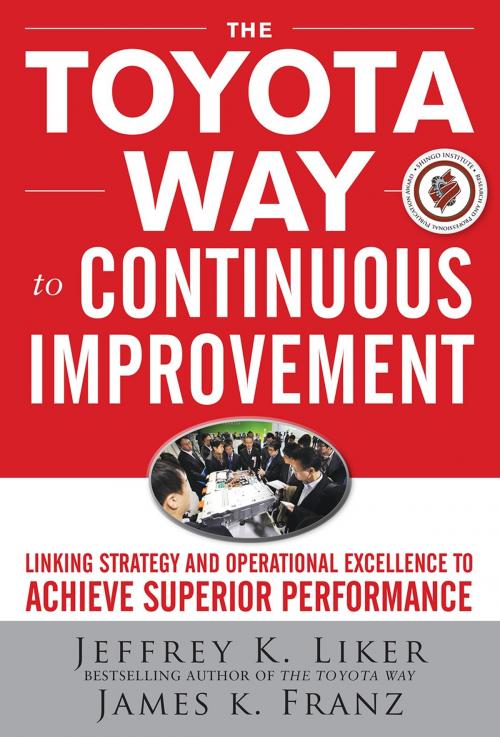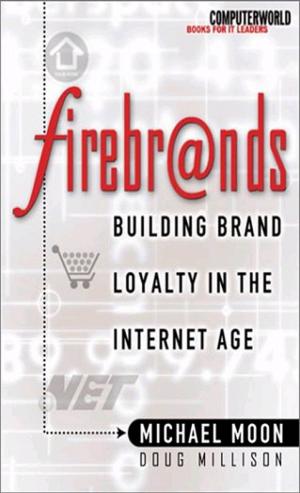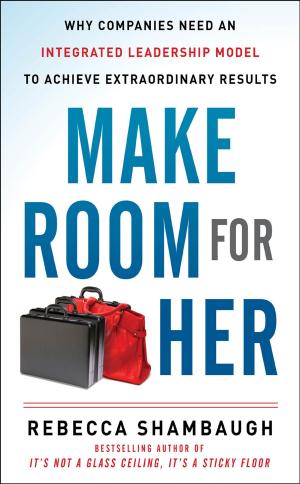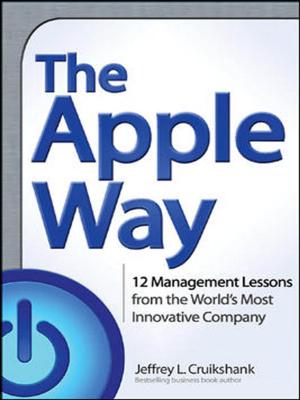The Toyota Way to Continuous Improvement: Linking Strategy and Operational Excellence to Achieve Superior Performance
Business & Finance, Human Resources & Personnel Management, Training, Management & Leadership, Management| Author: | Jeffrey Liker, James K. Franz | ISBN: | 9780071762151 |
| Publisher: | McGraw-Hill Education | Publication: | April 19, 2011 |
| Imprint: | McGraw-Hill Education | Language: | English |
| Author: | Jeffrey Liker, James K. Franz |
| ISBN: | 9780071762151 |
| Publisher: | McGraw-Hill Education |
| Publication: | April 19, 2011 |
| Imprint: | McGraw-Hill Education |
| Language: | English |
A lean blueprint for creating long-term sustainability the Toyota way!
During Toyota’s highly publicized recalls of 2009 and 2010, the legendary carmaker’s 60-year-old reputation for operational excellence was put under the microscope. Business pundits wondered out loud if Toyota’s quality levels had decreased dramatically, while the harshest critics predicted the end of the company as we know it. For the most part, the government’s findings absolved Toyota of serious defects and accidents, and Toyota recovered rapidly—but mistakes were made, which showed that Toyota is not perfect. In fact, there is always opportunity for improvement in every process.
In his bestselling business management classic The Toyota Way, Jeffrey Liker introduced the world to the foundational principles that have made Toyota the envy of companies around the world. Now, in The Toyota Way to Continuous Improvement, Liker teams up with former Toyota production engineer James Franz to explain the underlying thinking behind continuous improvement and why any company needs a disciplined approach to process improvement in every part of the organization.
Liker and Franz outline the common mistakes in thinking that limit results, and they reveal how Toyota achieves its dual objectives of improving business performance and developing its people through following Dr. W. Edwards Deming’s teachings of Plan-Do-Check-Adjust (PDCA). Through detailed case examples in many industries, you’ll learn how to:
- Determine why your processes aren’t achieving anticipated results
- Build a sustainable lean process with a well-defined purpose
- Create a system that reveals problems
- Teach every leader and team member at every level the art of PDCA for process improvement
With The Toyota Way to Continuous Improvement, you have the foundation you need to develop a vision of continuous improvement specific to your organization and plot a path to turn your vision into a measurable reality.
Praise for The Toyota Way to Continuous Improvement:
“I have found inspiration and lessons in these real stories from real people who try, sometimes fail, and yet find creative ways to succeed in adapting the principles of Deming and Toyota. Despite the diversity of applications revealed here, the commonality in vision, values, and desired outcomes unifies these leaders. You won’t be able to put this book down.”
RICHARD ZARBO, MD, DMD, Senior Vice President and Chairman of Pathology and Laboratory Medicine, Henry Ford Health System
“Lean is no longer an idea, a hypothesis, or a theory—it is a proven set of principles and practices that more and more people are using to achieve substantial, sustainable continuous improvement in a variety of enterprises. This book details the practices and case studies to help you bring Lean transformation to your enterprise!”
CHARLES BAKER, former Chief Engineer and former Vice President, Honda R&D Americas
A lean blueprint for creating long-term sustainability the Toyota way!
During Toyota’s highly publicized recalls of 2009 and 2010, the legendary carmaker’s 60-year-old reputation for operational excellence was put under the microscope. Business pundits wondered out loud if Toyota’s quality levels had decreased dramatically, while the harshest critics predicted the end of the company as we know it. For the most part, the government’s findings absolved Toyota of serious defects and accidents, and Toyota recovered rapidly—but mistakes were made, which showed that Toyota is not perfect. In fact, there is always opportunity for improvement in every process.
In his bestselling business management classic The Toyota Way, Jeffrey Liker introduced the world to the foundational principles that have made Toyota the envy of companies around the world. Now, in The Toyota Way to Continuous Improvement, Liker teams up with former Toyota production engineer James Franz to explain the underlying thinking behind continuous improvement and why any company needs a disciplined approach to process improvement in every part of the organization.
Liker and Franz outline the common mistakes in thinking that limit results, and they reveal how Toyota achieves its dual objectives of improving business performance and developing its people through following Dr. W. Edwards Deming’s teachings of Plan-Do-Check-Adjust (PDCA). Through detailed case examples in many industries, you’ll learn how to:
- Determine why your processes aren’t achieving anticipated results
- Build a sustainable lean process with a well-defined purpose
- Create a system that reveals problems
- Teach every leader and team member at every level the art of PDCA for process improvement
With The Toyota Way to Continuous Improvement, you have the foundation you need to develop a vision of continuous improvement specific to your organization and plot a path to turn your vision into a measurable reality.
Praise for The Toyota Way to Continuous Improvement:
“I have found inspiration and lessons in these real stories from real people who try, sometimes fail, and yet find creative ways to succeed in adapting the principles of Deming and Toyota. Despite the diversity of applications revealed here, the commonality in vision, values, and desired outcomes unifies these leaders. You won’t be able to put this book down.”
RICHARD ZARBO, MD, DMD, Senior Vice President and Chairman of Pathology and Laboratory Medicine, Henry Ford Health System
“Lean is no longer an idea, a hypothesis, or a theory—it is a proven set of principles and practices that more and more people are using to achieve substantial, sustainable continuous improvement in a variety of enterprises. This book details the practices and case studies to help you bring Lean transformation to your enterprise!”
CHARLES BAKER, former Chief Engineer and former Vice President, Honda R&D Americas















